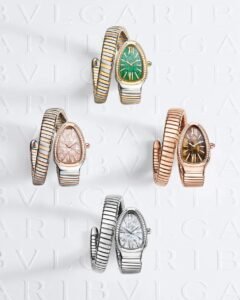In the 1970s, innovation was eclectic
The post-war boom led to a return to precious white metal, with a stylish diamond-encrusted surface.
Fine jewellery still reeks of Paris, but with more complex patterns and softer lines.
In the 1950s and 1960s, Bulgari introduced a distinctive floral brooch called the TREMBLANT, with a corolla fitted with a spring that quivered the flower’s head.
Egg-cut gemstones are another innovation because they are well suited to lower-value gemstones. “Italian academic” jewellery was born, and the Bulgari style was established.










